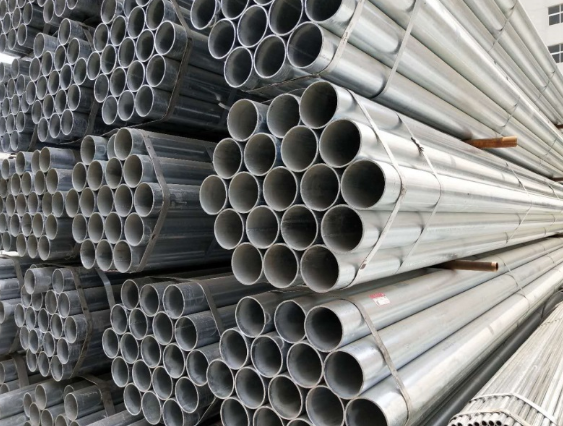Drying Temperature Of Hot-dip Galvanized Steel Pipe
When plated parts need to be stacked closely together for storage and transportation, adequate precautions should be taken to prevent white rust. Maintaining a low humidity environment around the plated parts and ensuring adequate ventilation between stacked plated parts can prevent white rust. Minimize it. Specific precautions are described below.
one. Surface treatment can be used to reduce the occurrence of white rust on the coating. Galvanized pipes and hollow plated parts can be coated with a layer of varnish after galvanizing. Products such as wires, plates and mesh materials can be waxed and oiled. Hot-dip galvanized structural parts can be subjected to chromium-free passivation after water cooling. deal with. If the plated parts can be transported and installed quickly, no post-processing is required.
In fact, whether hot-dip galvanizing requires surface treatment mainly depends on the shape of the plated parts and possible storage conditions. Plated parts that are tightly stacked or nested have poor protection against white rust, especially when they are stored for more than several weeks. Of course, if the surface of the galvanized structural part is fully exposed, post-processing is generally not required. If the galvanized surface is to be painted within 6 months, an appropriate post-treatment process must be selected to avoid affecting the adhesion between the zinc layer and the paint.
two. Plated parts should be stored in a covered storage room in a dry, well-ventilated environment.
three. If the plated parts can only be stored in the open air, the plated parts should be elevated from the ground and separated by narrow spacers to provide free flow of air to all plated parts surfaces. Plated parts should be placed at an angle to facilitate drainage. Plating should not be stored on wet soil or rotting vegetation. Separators are also recommended when shipping, if condensation is likely to occur on the surface of the plated part.
In addition, if the plated parts will cool down when transported over high mountains and then exposed to warmer and moister air at ground level, insulators must be used in this case. Wood containing rosin cannot be used as insulation or packaging because rosin itself is corrosive. It is recommended to use dry, untreated wood such as poplar, locust and fir when transporting and storing plated parts. Small plated parts stored in containers should be dried thoroughly before packaging. When sealing with packaging boxes, it is recommended to add some desiccant.
Four. Do not place covered plated parts where they may be affected by rain, fog, condensation and snow.
five. When galvanized steel is shipped by sea, they should not be checked as surface cargo, nor should they be placed in the ship’s bilge where they may come into contact with bilge water. Under electrochemical corrosion conditions, seawater intensifies white rust corrosion. At sea, especially in tropical oceans, where humidity is high, it is particularly important to provide a dry environment and good ventilation facilities.


Plaats een Reactie
Meepraten?Draag gerust bij!